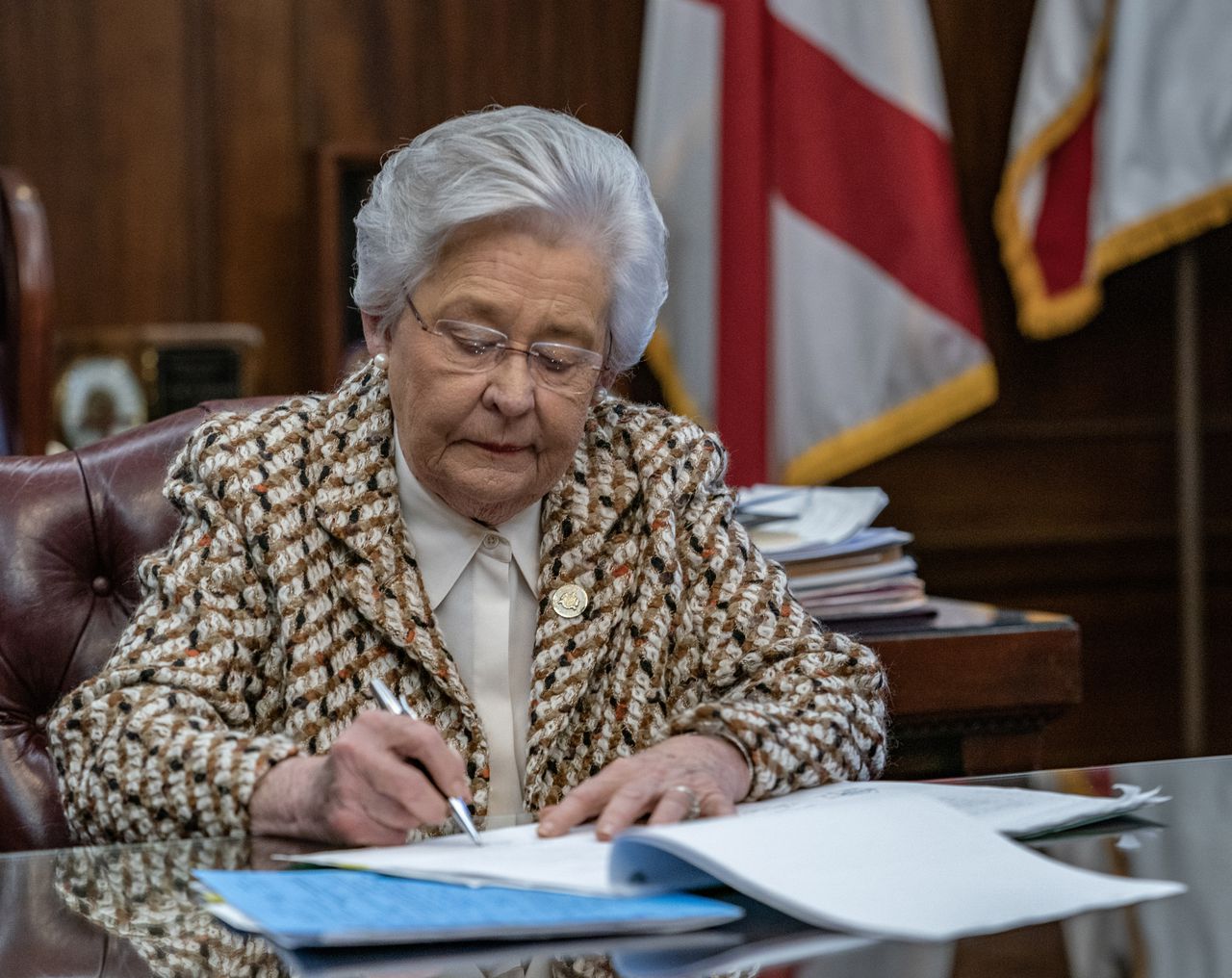Whitmire: Is Kay Ivey’s education spending plan legal? No one from the state will say.
This is an opinion column.
Late last month, Alabama Gov. Kay Ivey proposed spending $2.7 billion in education money. The plan includes more than $300 million worth of expenses that have no obvious educational purpose.
For instance, $25 million for a Montgomery whitewater rafting park.
And $31 million for the Mobile Airport Authority to relocate a terminal.
And $25 million for the Port of Alabama to buy coal loading equipment.
Last week, I asked the question: Why not Medicaid expansion? That program could call down billions in federal matching funds, but the governor has refused to support expansion for lack of local funding.
But I was getting ahead of myself.
The better question, it seems, was whether such spending was legal at all.
To find an answer, I’ve reached out to both education budget chairmen in the Alabama Legislature, the head of the Legislative Research Services and the Director of the Alabama Finance Department.
I haven’t gotten a clear answer from any of them yet.
State Rep. Danny Garrett, R-Trussville, the House budget chairman, said he’d been told it was legal because the legislature had done such things before. I asked him who told him that. He didn’t say
Garrett’s counterpart in the upper house, Sen. Arthur Orr, R-Decatur, said he’d asked the same questions and he hasn’t gotten a good answer, either.
Lawyers are looking into it, he said.
Othni Lathram, the head of Legislative Research Services, said his office is still researching it.
And state Finance Department Director Bill Poole didn’t answer questions I submitted to him by email on Monday afternoon.
I sent the same questions to Ivey’s spokeswoman.
Again, nothing.
“Is this legal?” is a question someone should be able to answer before spending billions of surplus education dollars.
An answer might be in the law that created the Education Trust Fund in the first place. That’s the state budget set aside for all things having to do with schools. Everything else comes out of a separate massive budget, called the general fund.
In July 1927, when creating the ETF, the Alabama Legislature seemed to focus its attention on two things.
One was exposing the Ku Klux Klan with an anti-masking bill, which a number of lawmakers were conspicuously reluctant to support.
The other thing was what The Montgomery Advertiser called “A radical and freakish revenue bill.”
The business-aligned Montgomery paper wasn’t keen on the new taxes the bill would raise, although it was lightly supportive of their purpose.
“The additional money that tobacco, natural resources and public utilities will provide must go into a trust fund for the exclusive benefit of education,” the paper wrote on its editorial page more than 90 years ago. “Thank heavens for that!”
The paper was rightly suspicious that lawmakers might try to raid the new fund for things that didn’t have a thing to do with education.
“Some of it, (just how much we do not know) will find its way into the general fund to buy nourishment for departments and bureaucrats not identified with education, and to make the mothers of countless office-hungry politicians exclaim: ‘I’m glad I raised my boy to be a Klansman!’” the paper said.
The bill passed.
But to assure the public that the new taxes weren’t some sort of a bait and switch, lawmakers made the new fund’s purpose clear. The law was so explicit it said it twice in the same sentence.
The new revenue “shall be set apart as a Trust Fund for educational purposes only, to be designated as the Alabama Special Education Trust Fund, and shall be kept separate and apart from all other funds in the State Treasury, and shall be paid out by the Treasurer on lawful appropriations, hereafter made specifically from such funds by the Legislature of Alabama for educational purposes.”
For educational purposes only.
The Education Trust Fund was born.
In the 1990s, the Legislature renamed the fund to drop the “Special,” but when doing so the bill made clear that everything else about the ETF remained the same.
I asked Ira Harvey, a public finance consultant and author of “The History of Educational Finance in Alabama” whether anything in the law regarding “educational purposes only” had changed since 1927.
Harvey said there had been no change through 2016, when he last updated his training manual for state employees and he wasn’t aware of any changes since then.
Every dollar that goes into the ETF is designated for education either by statute or by the Alabama Constitution. For nearly all of its existence, governors and lawmakers have tried to find ways to raid the fund for other things, and some questionable expenses have crept into the ETF.
The Legislature once spent ETF money on an Imax theater at the McWane Science Center in Birmingham and $685,000 for the Alabama Cattlemen’s Association’s MOOseum in Montgomery.
These sorts of expenditures have continued to creep into ETF budgets every year.
But Kay Ivey is trying to cross an important line — a barrier that has protected education funding from competing interests for nearly a century.
There’s an important difference between money for a museum and what Ivey’s office has proposed.
You can argue a museum has an “educational purpose.”
But a coal loading machine or an airport terminal?
What’s the educational purpose in that?
And if there’s not one, how is any of this legal?
It’s no wonder the governor’s office has gone silent. I wouldn’t want to answer the question, either.
More columns by Kyle Whitmire
Alabama governor wants $100 million of school funds for prison construction
Alabama governor sends education dollars to water park
Alabama’s billion-dollar no-bid prison disaster is only the beginning
